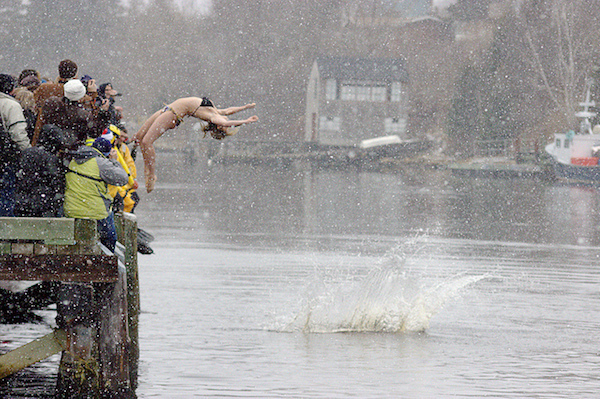Why doesn't this river freeze?

Polar Bear Plunges, a tradition in many parts of the world, consist of people in regular bathing suits (and sometimes without) taking a communal swim in a lake or river in winter. While there is a psychological question about why people might do this, there’s also a physics question: Why is the water in the river above not frozen even though the air is below zero degrees Celsius?
1) There’s warmer water underneath that diffuses upwards to the cold water on top.
2) Since river water moves, the cold surface water will mix with warmer water from below the surface, heating it up and preventing it from freezing.
3) Both 1 and 2.
4) None of the above
Photo credit: Glenn Euloth
This section requires Javascript.
You are seeing this because something didn't load right. We suggest you, (a) try
refreshing the page, (b) enabling javascript if it is disabled on your browser and,
finally, (c)
loading the
non-javascript version of this page
. We're sorry about the hassle.
Both of the reasons are valid, so the answer is "Both 1 and 2".
When there is warm water underneath, the heat will slowly diffuse upwards, which thus prevents the cold water from freezing. This is called diffusive heat transfer .
Furthermore, due to the motion of water in a river, the water will actively mix with each other and swirl around. This is known as advective heat transfer . The faster the river flows, there is more heat transfer from the bottom to the top, and hence it becomes harder to freeze.
Lakes and ponds tend to be stagnant pools of water, and hence it is possible for the surface to freeze, while the warmer water stays underneath. Due to water mixing, most of the river needs to freeze, before we will see it freeze. That's not to say that rivers will never freeze. In fact, the US is experiencing a severe winter storm, and the Chicago river has even frozen over!!